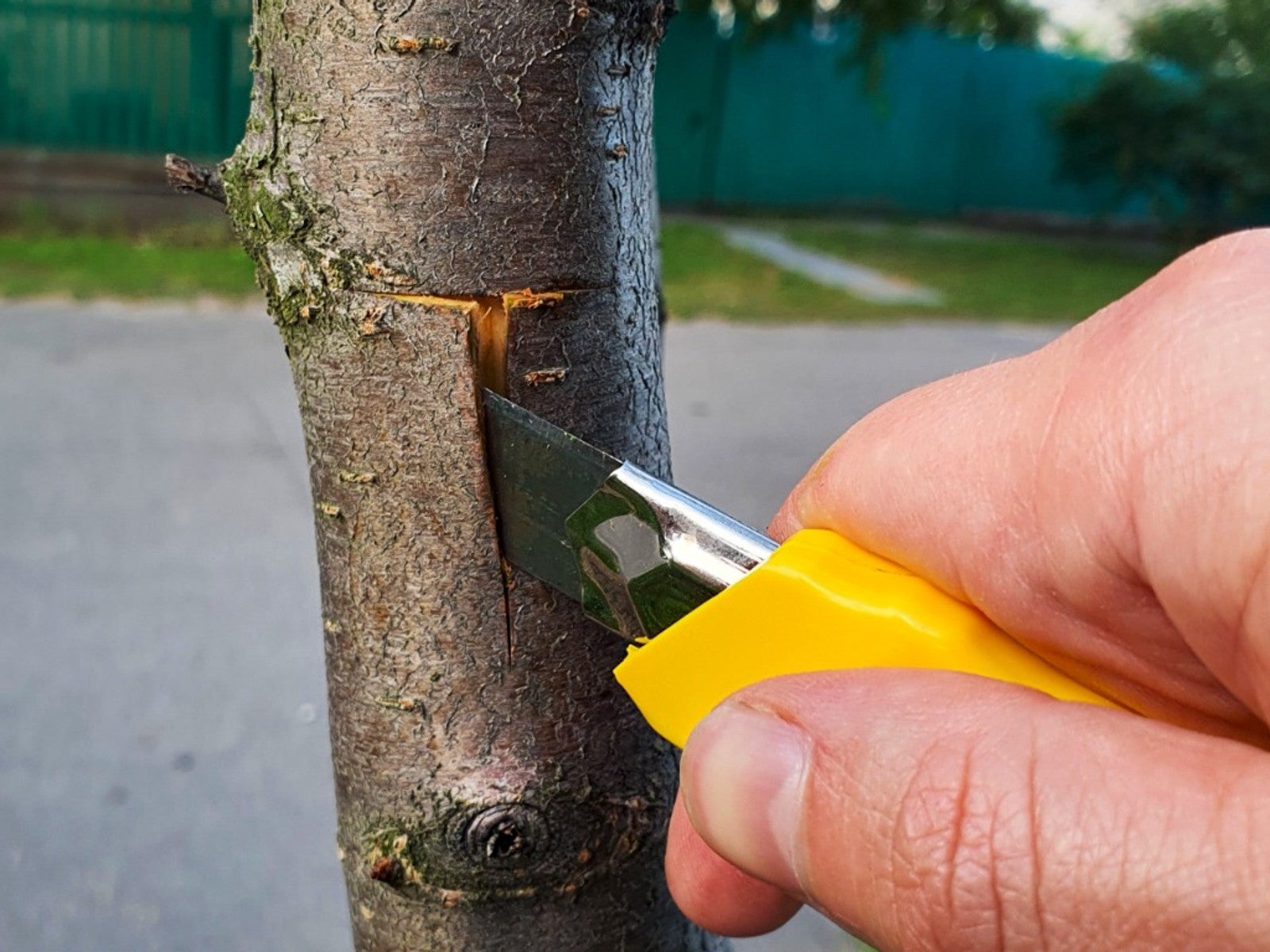Tree Budding Info: What Is Budding Propagation


While browsing plant catalogs or online nurseries, you may have seen fruit trees that bear several types of fruit, and then cleverly named the fruit salad tree or fruit cocktail tree. Or perhaps you’ve seen articles about the unreal looking creations of artist Sam Van Aken, The Tree of 40 Fruits, which are literally living trees that bear 40 different types of stone fruits. Such trees might seem unbelievable and fake, but they actually are possible to make by using the budding propagation technique.
Budding Propagation Technique
What is budding propagation? Propagation by budding is a pretty common method of plant propagation, in which a plant bud is grafted onto the stem of a rootstock plant. Creating bizarre fruit trees that bear many types of fruit is not the only reason for propagation by budding.
Orchard growers frequently use the budding propagation technique to quickly create new dwarf or semi-dwarf fruit trees that take less time to fruit and require less space in the orchard. They do propagation by budding to create self-pollinating fruit trees by grafting trees that cross pollinate each other onto one rootstock tree. This budding propagation technique is also used on holly to create plants that have male and female all on one plant.
How to Propagate Plants by Budding
Budding propagation produces true to type plants, unlike sexual propagation where plants could turn out to be like one or the other parent plant. It can generally be performed on any woody nursery tree, but it does require some skill, patience, and sometimes plenty of practice.
Propagation by budding is done on most plants in spring through summer, but for some plants it is necessary to do the budding propagation technique in winter when the plant is dormant. If you wish to try this, you should research tree budding info and propagation on the specific plant you are propagating.
There are two main types of bud propagation: T or Shield budding and Chip budding. For both methods, it is necessary to use a clean, sharp knife. There are specially made bud knives for this in which the knives have a blade that curves up at the end, and they may even have a bark peeler at the bottom of the handle.
T or Shield budding propagation
The T or Shield budding propagation technique is done by making a shallow T-shaped slit in the bark of the rootstock plant. When done on the right trees at the right time, the bar flaps of the T-shaped slit should easily lift slightly away from the tree. This is important because you will actually be sliding the bud under these flaps of bark.
Gardening tips, videos, info and more delivered right to your inbox!
Sign up for the Gardening Know How newsletter today and receive a free copy of our e-book "How to Grow Delicious Tomatoes".
A nice healthy bud is selected from the plant you wish to propagate and is cut of the plant. The bud is then slid under the flaps of the T-shaped cut. The bud is then secured into place by closing the flaps and wrapping a thick rubber band or grafting tape around the slit, above and below the bud.
Chip budding propagation
Chip budding is done by cutting a triangular chip out of the rootstock plant. Cut down into the rootstock plant at a 45 to 60-degree angle, then make a 90-degree cut at the bottom of the angled cut to remove this triangular portion from the rootstock plant.
The bud is then cut off the plant you wish to propagate in the same way. The bud chip is then placed where the chip of the rootstock plant was removed. The bud is then secured into place with grafting tape.